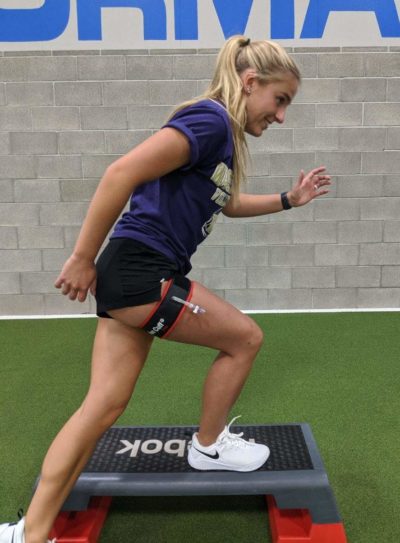
Blood flow restriction (BFR) training is not a new idea but has just recently taken off as the hot new concept in the rehab and training world. As with anything that touts itself to be the “latest and greatest” we have to ask ourselves if it really does all it says it does. Fortunately for us and our patients the research suggests that BFR really can be a game changing part of your rehab.
BFR training started in the 1960’s in Japan by Dr. Yasiaki Sato who played with multiple devices and ways of restricting blood-flow during exercises. He later developed the Kaatsu cuff which is still used in training today. Research started to come out of Japan regarding the benefits of BFR in the late 90’s which showed promising results in both healthy and injured individuals. Research has continued to mount over the last 10 years and we now know the use of BFR training shows promise across multiple population groups.
BFR training can sound intimidating to some but it is usually comfortable and painless. It involves a cuff placed above the muscle to be worked, usually at the upper arm or upper thigh, and uses air pressure similar to a blood pressure cuff to block some of the blood-flow to that limb.
The goal of the blood flow restriction is to restrict venous return to the muscle while still getting some arterial blood flow to the area. This leads to pooling of blood in the muscle leading to greater metabolic stress and cellular swelling in the area. This is the same response the body has to

a muscle lifting heavy loads. As a result the cells respond similarly leading to increased muscle hypertrophy and strength due to significant increases in human growth hormone in the cells. In fact, studies have shown up to 170% more growth hormone secretion in cells after BFR training versus traditional strength training! The benefit of this is that these cell adaptations are happening with loads of about 20-30% of 1 Rep Max (RM) vs at least 70% of 1 RM for traditional strength training.
This is where the huge benefits to a rehab population come in. We are able to get the same benefits of lifting heavy weights doing very light (20-30% of 1 RM) exercises. This means that we can prevent atrophy and start seeing strength gains and muscle hypertrophy very early on in the rehab process. Because the loads needed to see these gains are so low we are able to better protect joints and surgical precautions while still the benefits of lifting with much heavier loads.
BFR training does have it’s risks and is not a benefit to everyone. However, to anyone coming from a post-op situation or other injury where muscle weakness and atrophy are present BFR training could be the jump start you need to get back to your goals faster and easier. We make sure to evaluate each patient individually and create a rehabilitation plan specific to their needs and comfort level. Again, BFR is not for each patient and we use discretion when adding it to the plan of care.
For more information on pre and post injury rehabilitation options, please call one of our 10 clinics and speak with a therapist about a treatment plan that is right for you.
Pablo Gomez PT, OCS
Rebound Physical Therapy @ Boss Sports Performance
